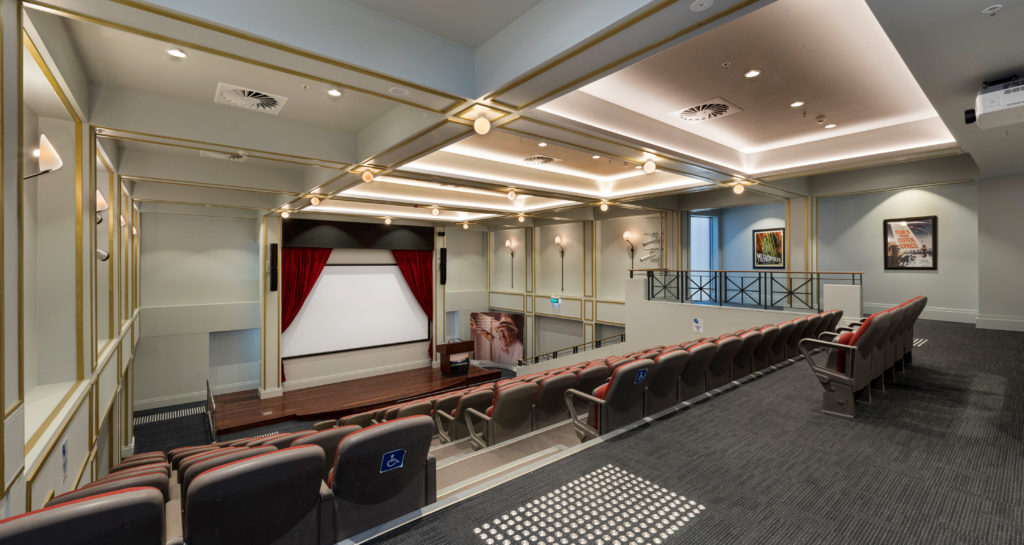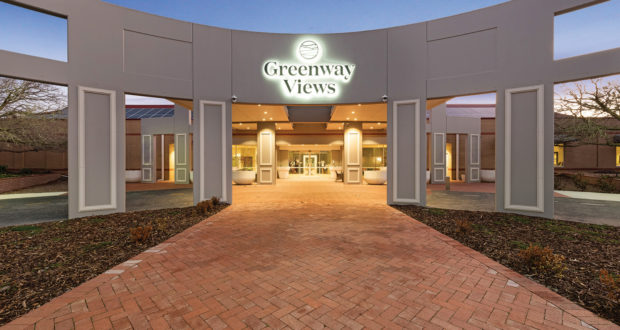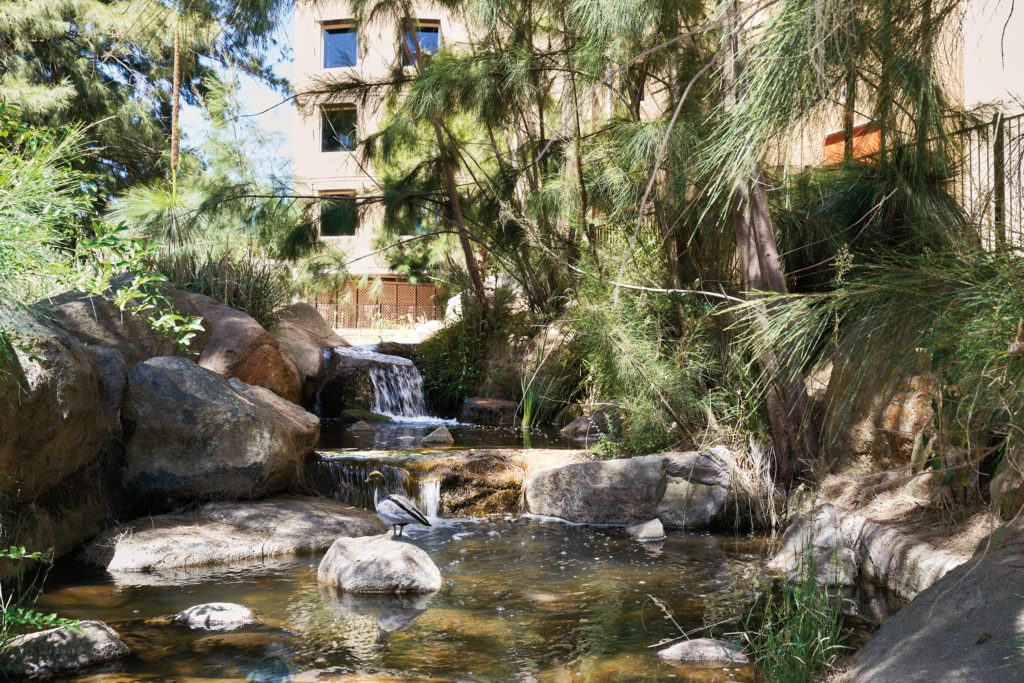Upgrading aged care facilities will be a focus for many providers in the coming years, while some will need to look at new builds to keep up with new expectations in the sector.
However, there are obvious drawbacks of building an aged care home. They're costly, time consuming and potentially bad for the environment.
But as a global pandemic has changed the way a generation of us will work, could the solution be in the offices many have left behind?
“With the challenges of COVID-19 making working from home commonplace, the need for large CBD offices is diminishing and as such, is heightening the scope for adaptive reuse of some older buildings,” says Kevin Miles, state managing partner of design firm Gray Puksand.
Gray Puksand recently completed work on LDK's Greenway Views Seniors Living in Canberra which made use of the old Department of Social Services buildings.
Using the adaptive reuse model of building and design, architects and building owners can salvage old builds in a sustainable manner. It is seen as an effective way of stopping urban sprawl and limiting the environmental impact of a new build. It is also associated with cost and time savings, and in some countries has tax advantages.
Gray Puksand director of interior design, Maria Correia, says that an obvious plus of reusing office buildings for aged care living is location, therefore keeping older people in the middle towns and cities and still a big part of the community.
"A lot of elderly people talk about the fact that they don't want to be isolated from the community," she told Aged Care Insite.
"Why should aged care be looked at as something that everybody wants to retire by the beach? Not necessarily. We're finding a lot of older people, especially people that are into art and culture, music, and theatre, still want to be in the urban environment. They still want to be connected to those things that still bring them a lot of joy.
"We've heard a lot of people downsizing from big homes in the suburbs and wanting to go live in the city, where there's a lot of activity and there's a lot of energy. So we've been really thinking long and hard about opportunities and how we integrate our elderly within everyday life. And why not in cities?"
The newly refurbished aged care living space accommodates 500 people with 380 apartments, ranging from 50 sqm studios to 120 sqm three-bedroom apartments.
Correia says that the building, although unremarkable from the outside, had some great internal assets that made it a good candidate for refurbishment. It came with a fully equipped auditorium, a babbling brook running through the complex and good outdoor space, all of which served as a good base for the team to create a living space that encourages socialisation and community.
"It's really interesting because although the actual facility is quite large, a lot of the rooms and apartments are fairly small. The whole approach to LDK's model is they actually want to encourage residents to use the social spaces rather than just remain in their apartments," she said.
"So Block B, in particular, is the community hub. We created a deli, it's got a barber, it's got a hairdresser, it's got a grocer, it's got a restaurant, it's got a bar, it's got a summer lounge and a winter lounge. So although residents are all housed in the same facility, it was also about encouraging them to socially interact together as a community."
Every detail was pored over in this build to accentuate communal living, even down to where the bins were located.
"We felt they should be quite close to the residents, so it's easy for them to get out of their apartments and pop it through chutes, and for it to land somewhere," Correia said.
"And the provider was adamant that he actually wanted them located outside their apartments, and actually outside the building, to encourage residents to come out of the apartment as a daily ritual, to break that idea of isolation.
"Even just a simple thing like lounges particularly, in these aged care homes they're all the same lounges, whether you sit on the second floor or ground floor. But we try to create really different moods within these lounges. There's a winter lounge, which feels very wintry. It's got lots of books, it's got a library space.
"There's the cellar lounge, it's got a lot of palm trees. It's very pink, it's very fun. So really just trying, through creating different spaces, creating different moods, encouraging residents to use these social spaces, to break that idea of isolation, and to encourage a sense of community."

In light of the royal commission the drive to upgrade older facilities will be at the forefront of providers' minds and the reusing and refurbishing otherwise unused spaces might become a trend, Correia believes.
"I've spent a very long period of my career living and working in Europe, where space is not always available. There is a real sense of retaining a lot of what's there. And repurposing and reimagining, and not having the luxury to just knock something out now. Because you've got impact, in terms of the urban network and cars getting in and out, and trucks. So there will be all sorts of other challenges," she says.
"In Australia, it's great, we've got this wonderful space and this opportunity to just build, build, build. But sometimes we're not really thinking about what we've left behind.
"And with the challenges of sustainability and how much we can do and being conscious about the environment, I just think it's something we've just got to start thinking a little bit more about. And it does take brave end-users and property owners to really think outside the box and want to make a difference."
Kevin Miles agrees, and argues that given our rapidly aging population, plus the location of some underutilised buildings, it makes sense to give them new life with a seniors’ focus.
"We need to be looking at environmentally sustainable options for creating new aged care buildings that can retain the embodied energy of existing assets and remove the assumption that new builds in the sector are the only option.
“For those landlords that have perhaps C-grade assets, we really should be thinking about new ways they can be used that genuinely will meet market demand and the needs of society,” he says.
Do you have an idea for a story?Email [email protected]
 Aged Care Insite Australia's number one aged care news source
Aged Care Insite Australia's number one aged care news source



It’s clear that these organisations are only going to cater for the wealthy end of town and clearly a client with dementia or a similar intrusive type of ailment will not be welcomed into this gentle and expensive atmosphere.
I think it’s sad that deregulation will forget about the pensioners, it’s sad that these people will read about the glitz and glamour, they and their families will presume that they can access this Hollywood aged care model and be totally disappointed . This type of accommodation further expands the gap between wealthy and poor and does little for actual care.
Fortunately there will be real facilities offering real care to concessional residents.